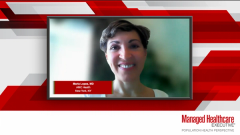
Individualizing UF Therapy
Drs Al-Hendy and Lopes conclude with final thoughts on GnRH receptor antagonists, relugolix and elagolix, changing the UF treatment landscape.
Episodes in this series

Ayman Al-Hendy, MD, PhD, FRCSC, FACOG, CCRP: Now that we have several new treatment options against uterine fibroid(s), how do you personalize or do a patient-centered selection of treatment options? That's a very good question. It relates to some of the factors that I mentioned earlier: the patient age, fertility plans, and interest in having surgical options. Most of the patients in my practice, and in the literature, like to consider nonsurgical options if it's available and if they are counseled towards that. In my practice, I like to discuss all the treatment options with the patients and then start to develop a personalized plan that fits with her goals and what she's trying to achieve. You asked me earlier about first-line treatment, and I said the ACOG [American College of Obstetricians and Gynecologists] doesn’t have a clear algorithm about that, but I think we should always consider starting with, like any other disease in medicine, reliable, long-term, safe, and effective medical treatment options, and only if those fail, then we can go to surgery. I would like to see this happen in the fibroid field; it has not been the case for many years. Surgery was the mainstay of treatment, and we discussed the reason for that. Now, with the availability of 2, and we hope in the future, more FDA-approved, reliable, long-term treatment options, we should change the paradigm for the algorithm to make it like any other disease, medical treatment options first, and then other, more invasive treatments after. In my practice, I counsel patients about these options, and many prefer to start with simple treatment options; they leave my office with a simple prescription for a treatment that they use in the convenience of their home. I haven't seen that situation yet, but if this fails, then we'll go to a more involved, more invasive, maybe surgical treatment option.
Maria Lopes, MD: The availability of these new classes of agents, the GnRH [gonadotropin-releasing hormone] antagonists, and we have 2 on the market, relugolix and elagolix, it’s exciting to see new categories for women. They have good data around the reduction of heavy menstrual bleeding, pain, and uterine volume. It’s an exciting option as an alternative to a definitive procedure, like a hysterectomy, but also maintaining that you must worry about bone density. Being able to maintain bone density while addressing symptoms is quite exciting to see in these new novel therapies that can potentially be used for longer periods of time versus the GnRH agonist in which you have to add back estrogen. It's about alternatives. As a payer, we think about cost of agents, the unmet need, efficacy, safety, and where they belong in terms of that treatment algorithm; perhaps, not the first thing you go to. Patient affordability becomes important because these are not inexpensive, they're not OCs, or over-the-counter NSAIDs [non-steroidal anti-inflammatory drugs]; there's usually a patient cost share. It's important to think about the right patient, right approach, having more treatment options, and hopefully avoiding surgery or further complications. The appropriate sequencing in terms of considering what's available based on patient's age, comorbidities, and other risk factors, as well as what else they've tried that has or has not worked.
Al-Hendy: We should start looking at fibroid as a medical disease, not a surgical disease. Like any other disease, we reserve surgery for complicated cases, cases that failed medical treatment, etc. It's going to be a journey for the medical system, because after so many years, it became more like the law of the land, and the way residents and fellows have been trained, fibroids equal surgery or hysterectomy. This might have been justified in the '90s or early this century, when we didn't have other reliable FDA-approved options, but it's no longer justified. I hope we're going to see this change, but it's going to take a lot of effort and increasing awareness among patients that there are non-surgical treatment options. If you remember, at the very beginning of this program, I talked about normalization in patients not seeking medical help. Some of that is because they hear from their friends and relatives that if you go to the doctor, the first word that's going to come from your gynecologist's mouth is hysterectomy, and many patients don't want to have major surgery. They decide to suffer in silence and not seek medical help, which has negative consequences on their quality of life and the society in general. We must increase awareness of these medical treatment options, that there are better options, and when you go to your doctor they will discuss those with you, and if you're eligible, if you're a good candidate for those, you will leave the clinic with a prescription, not with an appointment for hysterectomy. Gradually, I'm hoping we can see this change, but it's going to be a slow transition.
This transcript has been edited for clarity.
Newsletter
Get the latest industry news, event updates, and more from Managed healthcare Executive.


















































